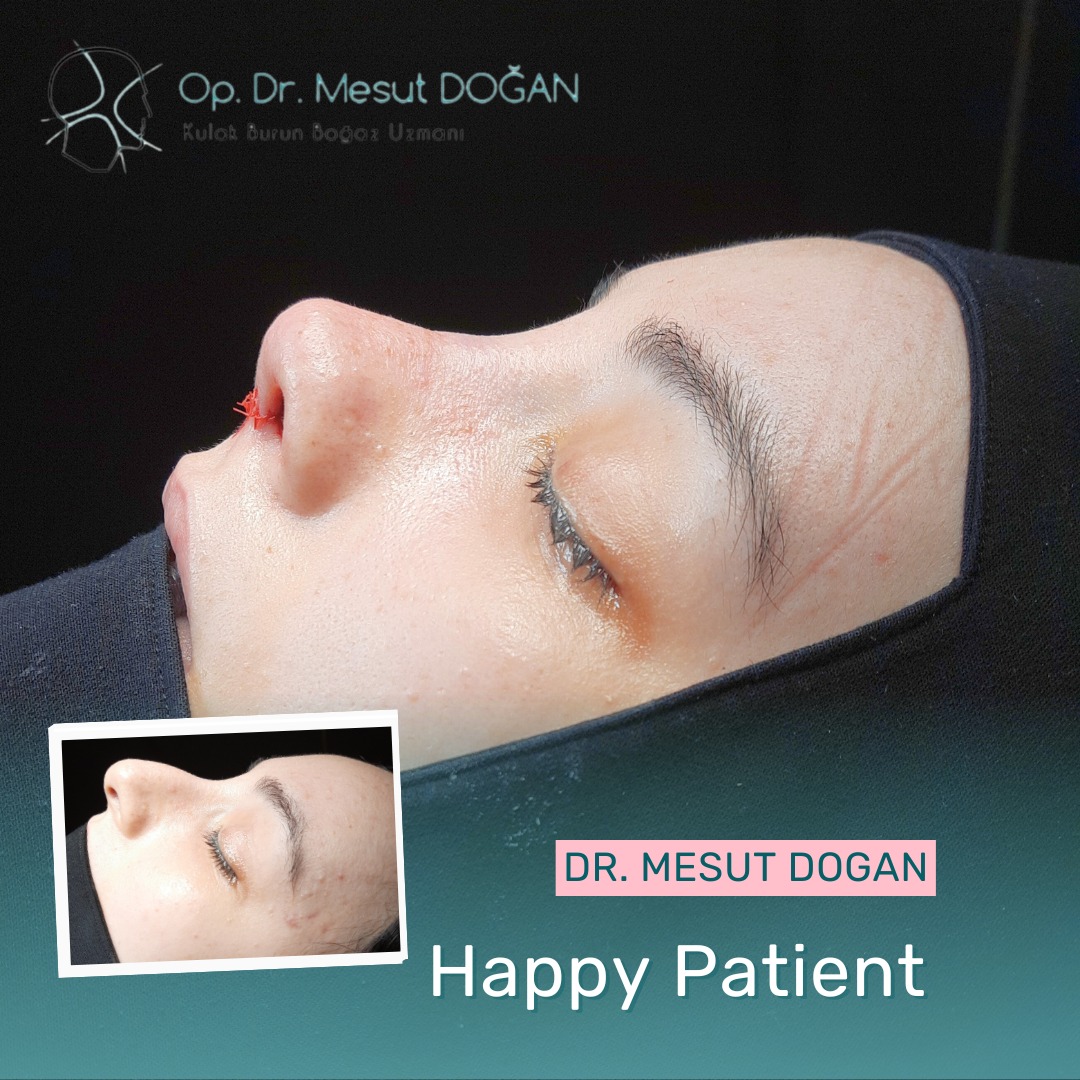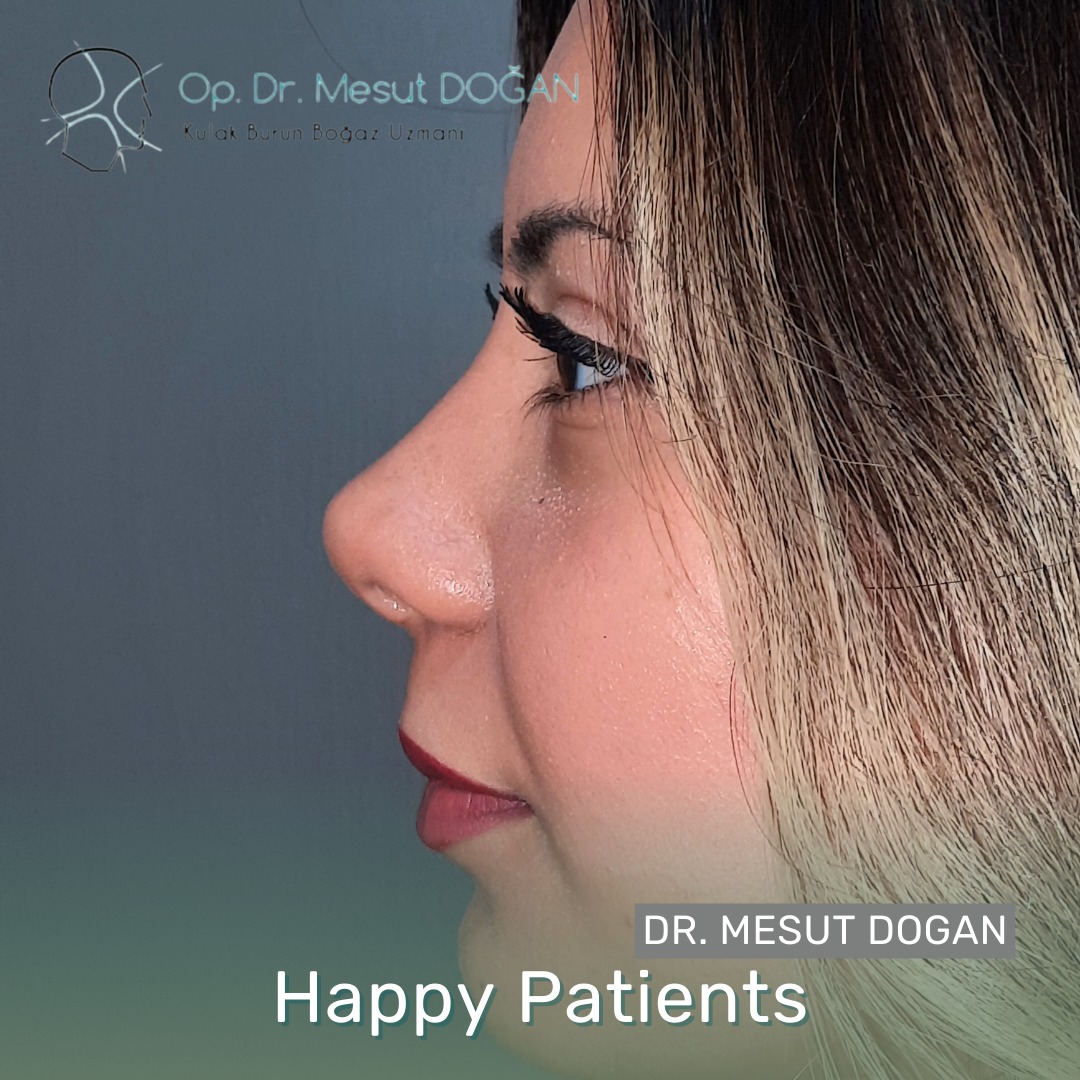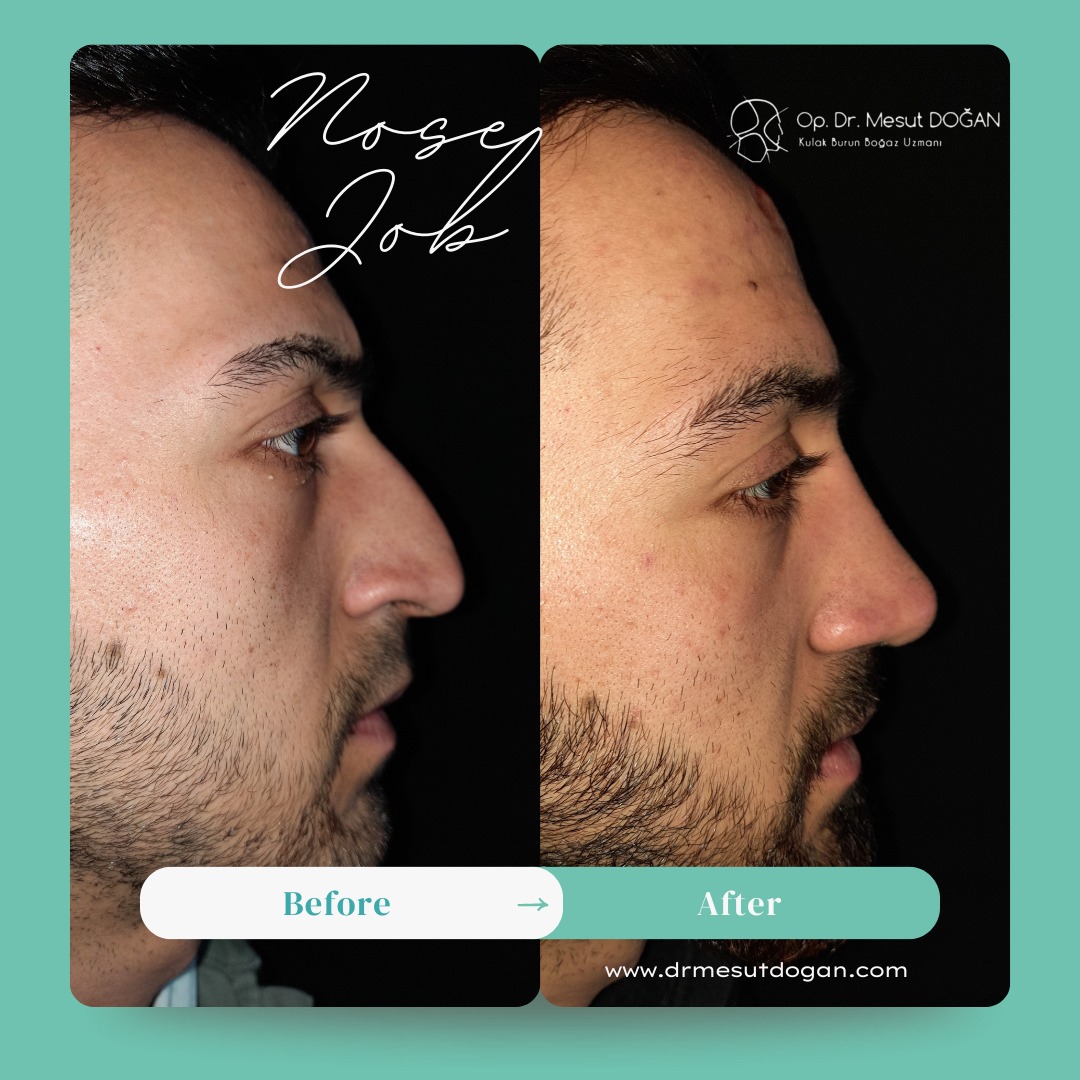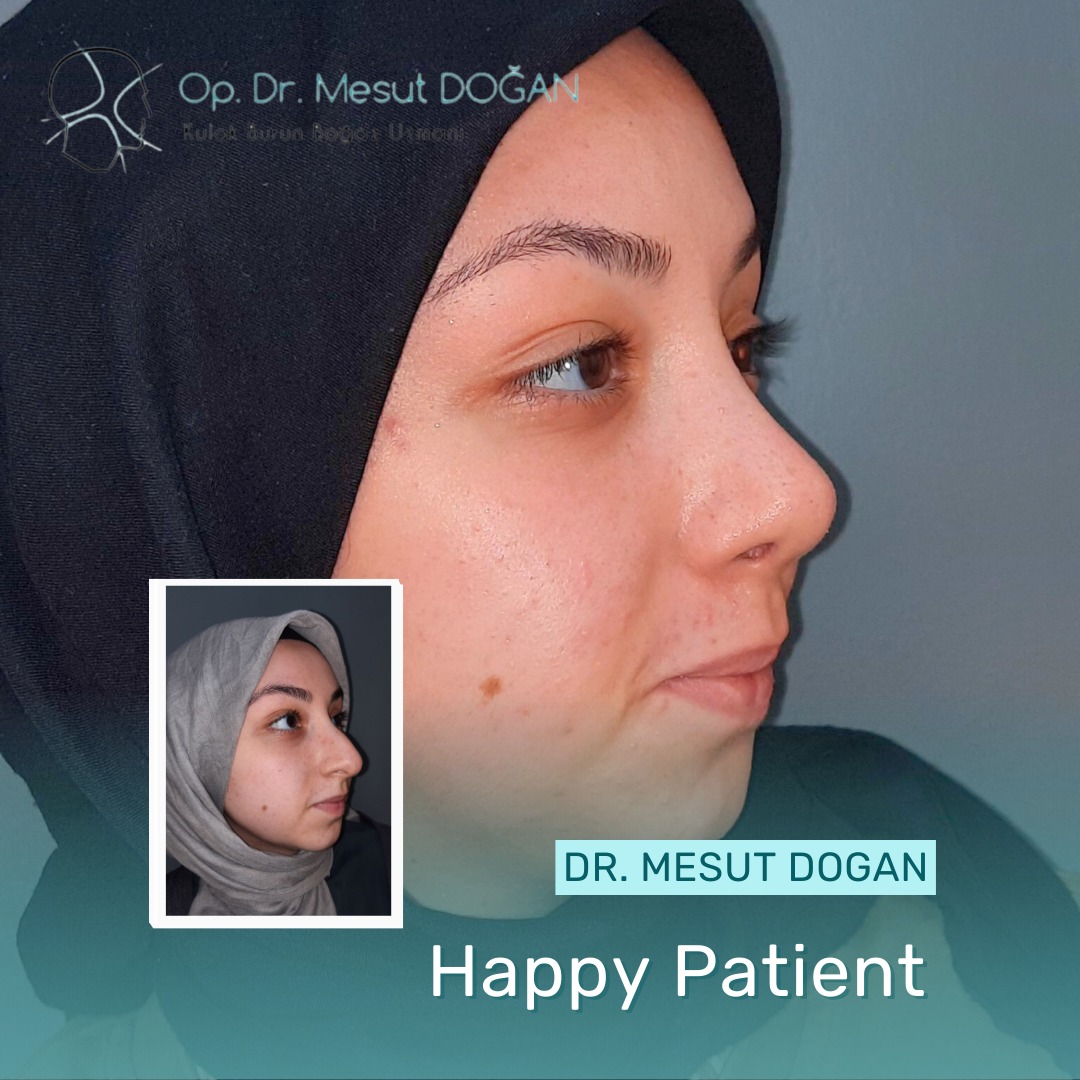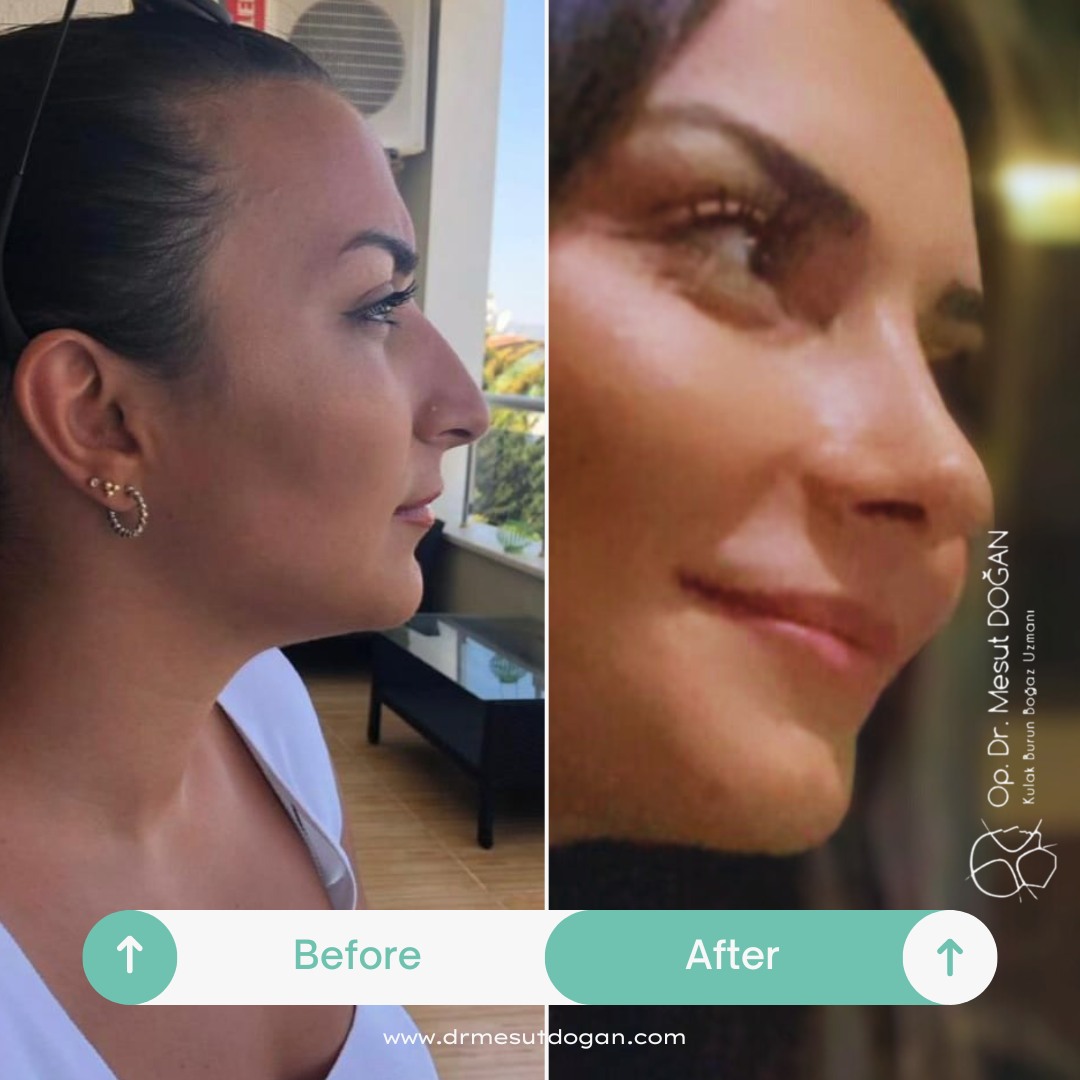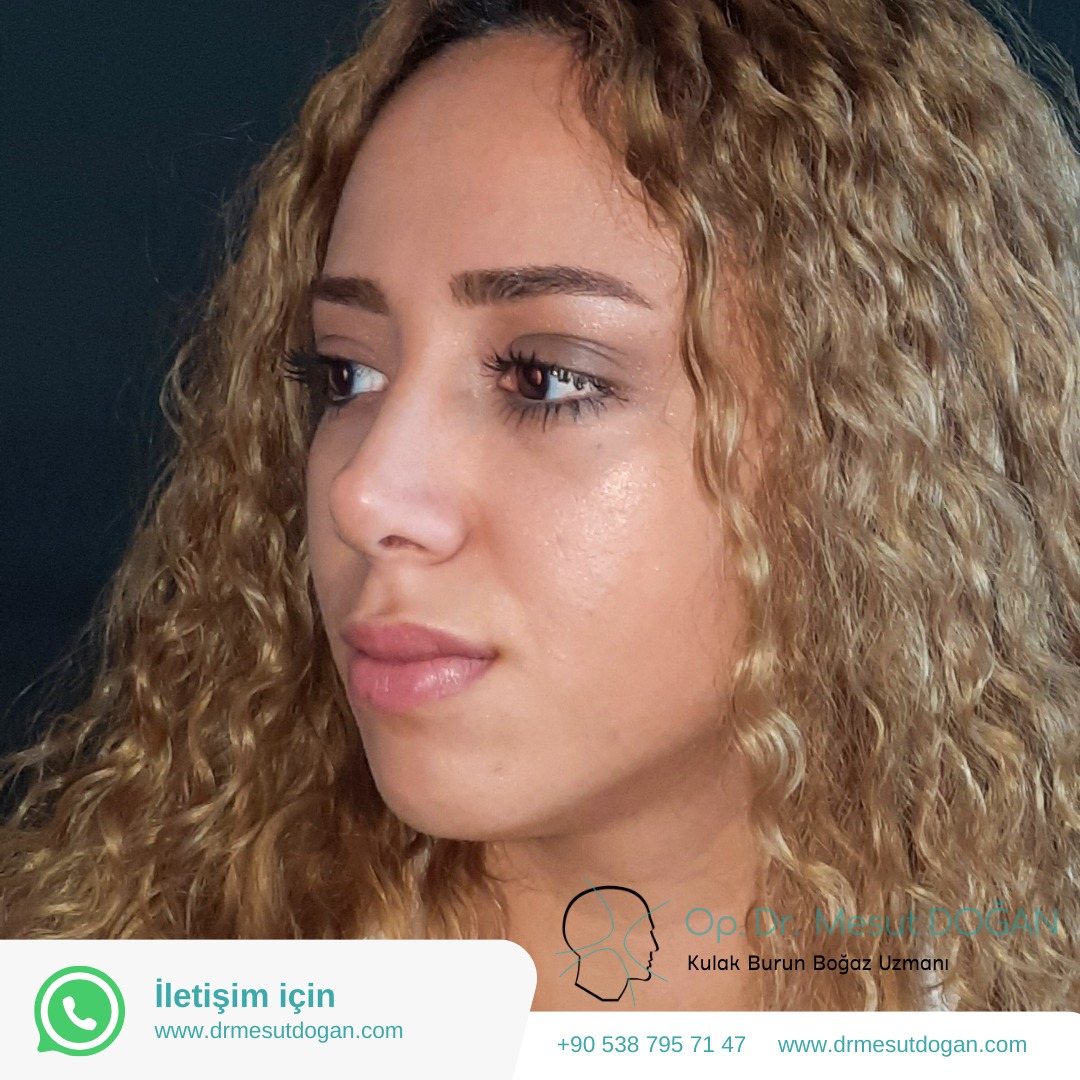Septum Deviation
The septum is the wall that divides the nose into two halves, made of cartilage at the front and bone at the back. Any curvature in this wall is referred to as septum deviation. It is also commonly known as a crooked nose or nasal septum deviation.
This deviation can make breathing more difficult. While airflow is reduced on the curved side, the open side often compensates, and the patient may not immediately notice the issue. Over time, however, the turbinates (nasal tissues) on the normal side can enlarge, and nasal blockage becomes more apparent. The deviation may involve only cartilage, only bone, or both. The surgical approach is planned accordingly.
SEPTUM DEVIATION SURGERY
Septum deviation surgery involves correcting the curved wall inside the nose—commonly referred to as the “nasal pillar”—composed of cartilage at the front and bone at the back. The procedure can be performed under general or local anesthesia and typically lasts between 30 and 45 minutes. This surgery does not alter the external shape of the nose.
A minimal 2mm internal incision is made inside the nose. Since no external incision is created, there are no visible scars. The stitches placed inside the nose are dissolvable, so there is no need to have them removed later.
Septal deviations may be congenital or caused by trauma. Before surgery, the relationship between the internal deviation and the outer shape of the nose should be carefully evaluated. If the outer structure is also crooked, internal correction alone may not resolve the problem—this is especially true in trauma-related cases. In such scenarios, both functional and cosmetic surgery should be performed together.
In most cases of septum deviation, turbinates (nasal tissues) also become enlarged. These are typically reduced using radiofrequency ablation during the same session. Radiofrequency is a minimally invasive method and not a full surgical procedure.
POSTOPERATIVE PERIOD AFTER SEPTUM DEVIATION SURGERY
The recovery process is not usually painful or difficult. Most patients can be discharged on the same day. The silicone splints and nasal tapes used during surgery are typically removed after 2–3 days. Once removed, the patient feels significantly more comfortable and can return to normal daily activities.
After splint removal, we recommend saline nasal irrigation, which can be purchased or made at home. Antibiotics are usually prescribed for about one week. Some crusting inside the nose is normal and may continue for a while, especially if radiofrequency was applied to the turbinates. Full recovery and optimal breathing can take 1 to 2 months.
Since the surgery targets the internal part of the nose and not the nasal bridge, there is typically no bruising or swelling around the eyes. This kind of swelling is more common with cosmetic rhinoplasty. However, even in cosmetic procedures, we now use Piezo technology, which significantly reduces bruising and swelling.
RISKS AND COMPLICATIONS OF SEPTUM DEVIATION SURGERY
As with all surgical procedures, there are potential complications. Thanks to modern techniques, however, the risks have been greatly minimized. The most common intraoperative or postoperative risk is bleeding, but with current surgical methods, this is rare. Infection is another general surgical risk, but it’s not higher for nasal surgeries like deviation correction.
A rare long-term complication is septal perforation, especially if the septum is excessively manipulated. However, the use of advanced techniques and special silicone splints has greatly reduced this risk as well.
Patient Reviews
I chose Dr. Mesut Doğan for my rhinoplasty operation, and I’m incredibly satisfied with the result. I now have a nose that looks natural and suits my face perfectly. He was attentive throughout the entire process, both before and after the surgery. I’m so glad I chose him!

I had been unhappy with my nose for years but kept postponing surgery out of fear. Thanks to Dr. Mesut Doğan, I was able to overcome all my fears. A natural appearance and being able to breathe comfortably were very important to me — and he delivered both. I’m truly grateful to him and his team.

I did extensive research on rhinoplasty and decided that Dr. Mesut Doğan was the right choice. From the very first consultation, he and his team made me feel confident and reassured. After the surgery, I achieved an excellent result both aesthetically and functionally. I’m so glad I met you, doctor!

I consulted Dr. Mesut Doğan for rhinoplasty and the result exceeded all my expectations. My nose looks so natural that no one can even tell I had surgery. He was by my side with his warm attitude and professionalism at every stage of the process. Endless thanks!

I had been unhappy with both the appearance of my nose and breathing problems for a long time. After meeting Dr. Mesut Doğan, I knew I had made the right decision. My surgery went very smoothly, and I’m extremely happy with the way I look now. I wholeheartedly recommend him to everyone.

Frequently Asked Questions
Most Frequently Asked Questions About Rhinoplasty
How Long Does a Rhinoplasty Surgery Take?
On average, it takes about 2 to 2.5 hours. The duration may vary depending on the specific procedures performed.
When Can I Take a Shower After Nose Surgery?
You can take a shower during the first 2 weeks as long as you avoid getting your face wet. You can wash your hair by tilting your head back and wash your body carefully without letting water touch your face. After 2 weeks, there are no restrictions.
Can I Get My Face Wet After Nose Surgery?
You should avoid getting your face wet for the first 2 weeks.
When Will My Nose Fully Settle After Surgery?
It usually takes between 6 months to 1 year for the nose to fully settle into its final shape.
Will There Be a Scar After Rhinoplasty?
There may be a very faint and barely noticeable scar under the nose.
Do I Need to Follow a Diet After Rhinoplasty? Are There Any Forbidden Foods?
There is no need for a special diet, and there are no food restrictions after surgery.
When Can I Return to Work After Nose Surgery?
Most patients can return to their daily routines the very next day. They can go out and manage their daily tasks comfortably. However, we recommend resting — not necessarily in bed — for the first week. Returning to work is generally suitable after the nasal splint and packing are removed, about one week post-surgery.
What Type of Anesthesia Is Used During Rhinoplasty?
Rhinoplasty is performed under general anesthesia.
When Are the Nasal Tampons Removed?
They are removed one week after the surgery.
When Is the Splint Removed?
The splint is also removed one week after the surgery, together with the tampons.
When Are the Tapes Removed?
At the one-week check-up, when the splint and tampons are removed, the tapes are replaced with new ones. The tapes are usually kept for another week, so in total, tapes remain in place for 2 weeks.
Will I Experience a Lot of Pain After Rhinoplasty?
No. Any discomfort can be easily managed with mild painkillers.
Can I Wear Makeup After Nose Surgery?
Yes, after 2 weeks. Makeup is allowed along with showering.
Are There Massage Techniques to Reduce Swelling?
Gentle downward massages from the bridge of the nose can help reduce swelling. However, since patients tend to apply too much pressure, we usually don’t recommend it strongly.
Is There Any Medication That Helps Speed Up Healing?
There are special creams available for bruising. Your doctor will recommend one after the surgery.
What Are the Advantages of the Piezo Technique?
Piezo surgery targets only the bone tissue without damaging the surrounding soft tissues. Since it doesn’t harm soft tissue, under-eye bruising and swelling are minimal. The recovery process is faster, and it provides greater ease during the surgery.
When Does Under-Eye Swelling Go Away After Nose Surgery?
Thanks to the Piezo technique, swelling is minimal and typically resolves within 2–3 days.
When Does Under-Eye Bruising Go Away After Nose Surgery?
Again, due to the Piezo technique, bruising is minimal and usually disappears after about one week.
Will My Nasal Congestion Be Treated During Rhinoplasty?
Yes. Addressing breathing problems such as nasal congestion is one of the core principles of rhinoplasty.
Can the Nose Drop After Surgery? What Causes It?
Yes, if the structural support of the nose is compromised, it may drop. That’s why the surgical technique and the attention and skill of the medical team are extremely important.
Can Anyone Have a Nose Surgery?
Rhinoplasty is not recommended for individuals under 18, as their nasal development is not yet complete. It also cannot be performed on patients with certain health conditions that make general anesthesia risky.
Is There an Age Limit for Rhinoplasty?
Since nasal development is usually completed by age 18, we do not recommend surgery for anyone younger.
Can Both Cosmetic Correction and Deviated Septum Be Fixed in One Surgery?
Absolutely. Both procedures can be done in a single session.
Will I Need Someone to Take Care of Me After Surgery?
No, you’ll be able to manage your daily activities on your own. However, it’s beneficial to have someone accompany you during your overnight stay at the hospital.

